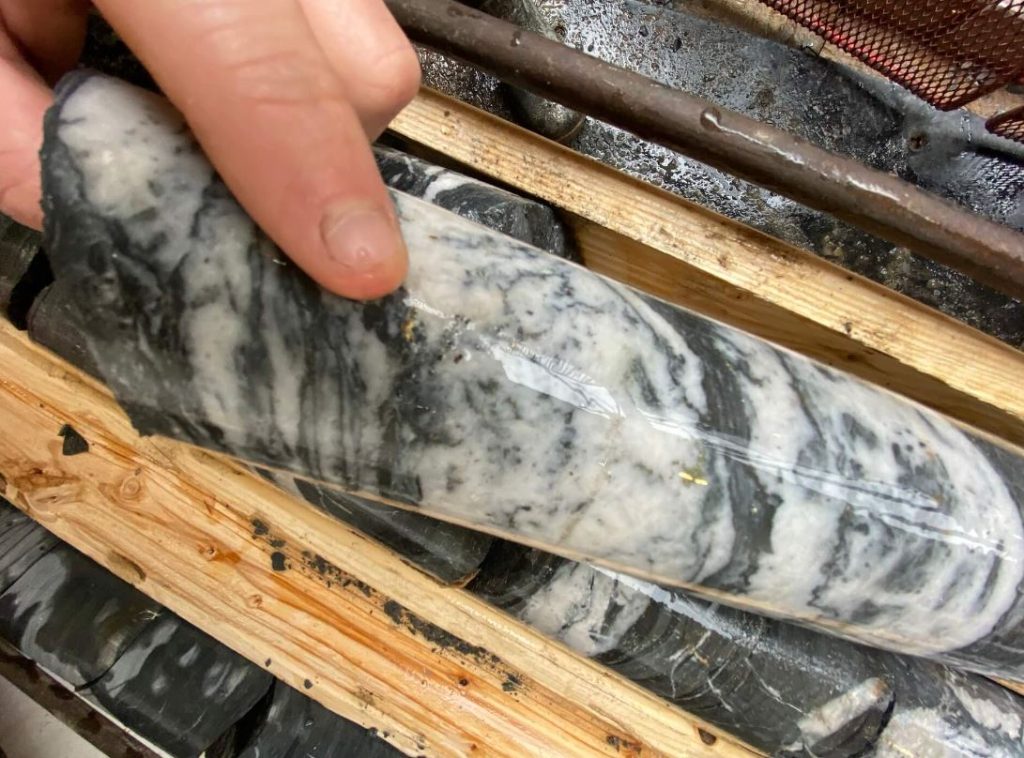New Found Gold drills 36.2 g/t gold over 16.7 metres at Queensway, Newfoundland

New Found Gold Corp. [TSXV-NFG; NYSE –NFGC] reported results from 61 diamond drill holes that were completed as part of a program designed to infill gaps, extend high grade to surface, and test opposing vein orientations to the main east-northeast-striking orientation of the Keats-Baseline fault zone (KBFZ) at Iceberg-Iceberg East, a high-grade zone located 300 metres northeast of Keats along the highly prospective Appleton fault zone (AFZ). New Found’s 100%-owned Queensway project comprises a 1,662-km2 area, accessible via the Trans-Canada Highway, 15 km west of Gander, Newfoundland.
Iceberg and Iceberg East highlights: Intervals of 36.2 g/t gold over 16.70 metres in NFGC-23-1820 and 33.7 g/t gold over 14.70 metres in NFGC-23-1827 are located approximately 45 metres apart within the high-grade domain of Iceberg, where a confluence of high-grade gold veins and associated structures intersect. These holes were drilled from the west to the east to better test this secondary set of gold veins that are partly controlling the high-grade mineralization in this segment of the Keats-Baseline fault zone, and to gain a better understanding of their orientations and true widths.
Intervals of 40.5 g/t gold over 5.85 metres in NFGC-23-1838 and 13.9 g/t gold over 12.80 metres in NFGC-23-1914 are located at a vertical depth of just 20 metres and were designed to extend high-grade gold mineralization to surface at Iceberg. These holes are located 50 metres to the south and 150 metres to the north of NFGC-23-1820, respectively.
Other notable intercepts from today’s release include 12.6 g/t Au over 16.70 m in NFGC-23-1323 and 42.8 g/t Au over 7.35 m in NFGC-23-1746, located 25 m and 80 m along strike to the north of NFGC-23-1820. The intercept of 24.9 g/t Au over 2.25 m in NFGC-23-1613 is located 530 m farther to the east at the far eastern extent of Iceberg East.
The near-surface Iceberg-Iceberg East high-grade segment of the KBFZ has a strike length of 655 metres. When combined with the 400 m high-grade segment of Keats Main, this near-surface, high-grade corridor covers over one km of strike. This domain of high-grade occurs within the overall KBFZ, a gold-mineralized damage zone that is drill defined over 1.9 km of strike, where it remains open.
Melissa Render, vice-president of exploration, stated: “Infill and definition drilling at Iceberg and Iceberg East have provided us with a comprehensive picture of the near-surface expression of this portion of the KBFZ, including the geometries of the veins at play and the controls on high-grade gold mineralization. The KBFZ has demonstrated several times over that it is a very important structure, with the majority of metres used to date to test only the top 250 metres vertical. The company has now expanded the program at Iceberg-Iceberg East, utilizing the seismic data to assist in targeting additional domains of gold mineralization within the KBFZ at depth.”
The company is currently undertaking a 650,000 m drill program at Queensway, and approximately 4,500 metres of core are currently pending assay results.
The company notes that it has not completed any economic evaluations of its Queensway project and that the Queensway project does not have any resources or reserves.
New Found is well financed for this program with cash and marketable securities of approximately $49-million as of March 2024.
